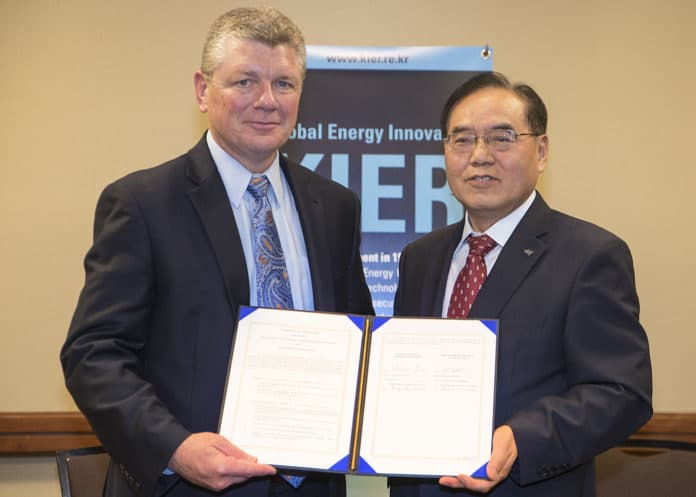The University of Texas at Arlington and The Korea Institute of Energy Research have joined forces to develop clean energy technologies intended to improve the lives of residents worldwide.
“South Korea is a strong proponent of the development of clean energy sources and the Korea Institute of Energy Research is leading the way in the development of new technologies,” said Duane Dimos, vice president for research at UTA, commenting in a news release.
Dimos and Lee Ki-woo, president of The Korea Institute, signed the agreement on Wednesday morning at the Hyatt Regency DFW.
“This agreement is a great fit for us as we focus our attention increasingly on developing and commercializing technologies with real global environmental impact within our Strategic Plan 2020: Bold Solutions Global Impact,” Dimos said
The South Korean government recently unveiled plans to invest about $36.6 billion in developing renewable energy industries, such as solar and wind power and eco-friendly power plants, by 2020. The government also raised the required ratio of renewable energy generation to 5 percent by 2018 and 7 percent by 2020.
“We at KIER [Korea Institute of Energy Research] are looking forward to working with UTA’s multidisciplinary teams, which have already proven they are at the forefront of new technologies in the clean energy arena,” Ki-woo said.
UTA’s Center for Renewable Energy and Science Technology [CREST] leads the university’s efforts to find a cheaper, more environmentally friendly source of energy. CREST is a collaborative group effort spanning several disciplines in the College of Science and the College of Engineering to find solutions for a sustainable energy future.
Earlier this year, CREST researchers demonstrated a one-step conversion process that transforms carbon dioxide and water into liquid hydrocarbons using both light and heat, proving that the potential exists for creating a sustainable, carbon-neutral liquid fuel. The research, published in the Proceedings of the National Academy of Sciences, received worldwide attention.
CREST researchers also have designed and built a microfluidic electrochemical reactor for NASA that converts exhaled carbon dioxide into oxygen and gaseous hydrocarbons through carbon dioxide electrolysis. The research team was one of four and the only university-based group selected by NASA’s Game-Changing Development Program to develop innovative life support systems needed for deep-space exploration.
“This agreement will create opportunities for collaboration at the faculty, graduate and undergraduate levels for both research and study,” Dimos said.
“Deepening our understanding of Korea — one of Asia’s great cultures and a technology powerhouse — will also strengthen UTA’s position as a university that has real global impact,” Dimos said.






